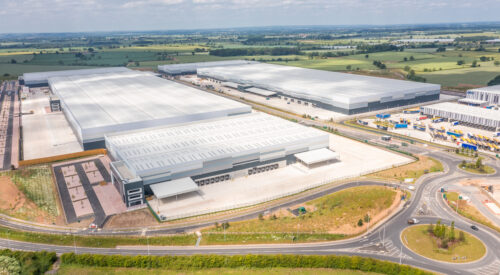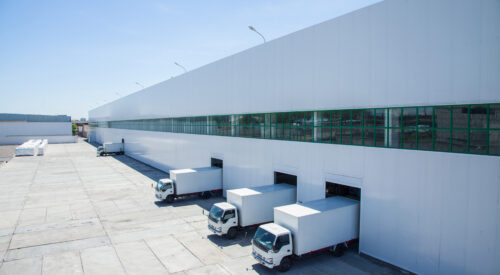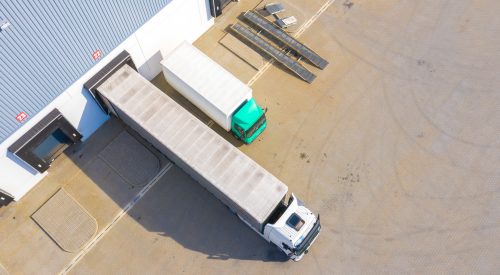This keynote interview was originally published in PERE’s 2025 Industrial & Logistics report. It has been reprinted with the permission of PEI.
Urban logistics assets have become a “must-have” for European real estate investors due to the sector’s resilient performance. However, investors are faced with a scarcity of available product and high competition levels that are driving pricing and impacting returns.
ICG Real Estate’s Greg Minson, global head of asset management; Chris Nichols, managing director and head of strategic real estate; and Adam Golebiowski, managing director and co-portfolio manager, Metropolitan, explain how understanding the needs of European corporates (owner-occupiers) is key to accessing the best assets in this sector.
Why is the European urban logistics sector so popular with real estate investors?

Adam Golebiowski: We see significant potential for cashflow resilience and future growth in this sector. Urban logistics assets in major population centers like London, Paris and large German cities have very low vacancy rates, with tenant demand driven by the long-term mega-trends of digitalization of the economy and reshoring.
These markets often have limited supply because there’s not much available land. Planning regimes also make development complicated and there is strong competition from developers looking at residential or other uses. As a result, building logistics facilities is often not the highest value use for ur- ban land. Therefore, the sites that do get developed are often let before construction even starts.
Greg Minson: We commissioned one of the leading agents to carry out a study for us in the UK and they found that over the past 10 years rental growth in urban locations has outperformed regional big-box warehouses by about 30 percent. This is even more accentuated in major cities like London, where the outperformance is around 50 percent.
How can investors invest in this in-demand sector?
Chris Nichols: An emerging approach for sourcing logistics assets in urban areas is to focus on corporates that want to free up capital for expansion or other business needs through sale and leaseback transactions. Through its €8 billion AUM real estate business, ICG Real Estate has been using this approach as one way to build its portfolio of income producing, mission-critical logistics assets across Europe.

The sale and leaseback market in the US has been around for 30 years and is very mature, with many multibillion-dollar companies investing heavily in it. In Europe, the market is in an earlier stage, but growing. We believe this, combined with current market trends, offers a very attractive investment opportunity.
GM: In short, it is very difficult, especially if your goal is to build a significant portfolio. The market is highly fragmented, and the majority of assets are outside of the institutional real estate ownership. We estimate that more than two-thirds of the total asset volume is held by European corporates, frequently as owner occupiers.
To access these assets, you need a strong corporate network, the ability to negotiate as a partner with the corporate, and the expertise to find creative financing solutions. You also need the infrastructure and capability to manage a granular portfolio. For example, our nearly $1 billion Metropolitan portfolio includes about 60 assets, mostly sourced directly through ICG’s corporate network and outside of the traditional real estate channels. It is very difficult, if not impossible, for a private investor to access this niche market.
An emerging approach for sourcing logistics assets in urban areas is to focus on corporates
Chris Nichols
What are the advantages of sale-leaseback deals?
AG: Based on our analysis of approximately $10 billion of recent logistics transactions, there is a pricing gap between buying logistics assets in the open market through a broker versus acquiring them directly from a corporate. According to our figures, there is a cap rate arbitrage of about 100-200 basis points.
Higher pricing puts you under pressure to underwrite aggressive real estate business plans, which may involve restructuring, refurbishing or redevelopment, whereas our typical asset tends to have a long-term lease in place with indexation or rent reviews that provide resilient, long-term income streams.
Corporates take a long-term view on these assets and are happy to accept our pricing in return for below-market rents. It is a win-win.

GM: Our approach, which is an asset-by-asset, credit-by-credit analysis, has resulted in a portfolio with a highly diversified, inflation-protected and predictable cashflow stream, which investors value tremendously in this environment.
Our aim is to create the majority of the value via these contractual cashflows, and you can only really accomplish this if you are meticulous in how you source, underwrite, structure and ultimately manage the assets. Syncing these four stages together is extremely difficult but we have managed to do so.
What types of tenants typically occupy urban logistics space?
CN: We have found that the fabric of urban logistics assets is not just parcel depots, cross-dock facilities used by DHL or other third-party logistics companies. There is a whole ecosystem of industries with different tenants using warehouse facilities in the most urban locations.
We have a real mix of retailers, healthcare, light-industrial and high-tech manufacturing companies. Fundamentally, a diverse portfolio of assets and tenants translates to a resilient portfolio.
What are the typical lease structures and lengths?
CN: The typical duration of a sale and leaseback lease will be between 10 and 20 years, depending on the geography. In the UK it is probably 15 to 20 years, while on the continent it is probably 10 to 15 years as a standard.
Typically, when you acquire an asset that is fully leased, the leases in France or Germany are double-net leases. So, as a landlord you are still responsible for the fabric of the building, for major repairs, for major capex. We try to negotiate triple-net leases – where the tenant is responsible for taxes, insurance and maintenance – so we have a lease template that we simply roll out to our new transactions, and that gives us a very clean cashflow through the duration of our hold.
Triple-net leases are still uncommon in Europe, so we spend a lot of time negotiating and explaining them, but we are finding tenants to be very receptive to the concept.
We see significant potential for cashflow resilience and future growth in this sector
Adam Golebiowski
Which markets look most attractive today?
AG: We primarily target large urban markets close to densely populated areas. Our assets have, on average, 1.5 million inhabitants within a 30-minute drive. We focus on the major European economies such as the UK, Germany and France, as well as some of the Western European countries.
What are the opportunities for active asset management in this sector?
GM: A large, pan-European portfolio does create management challenges, but it also creates opportunity. Earlier this year, we launched Axel Logistics, a dedicated management platform to lead the day-to-day operations of the assets and the strategic initiatives to unlock value. The information and data that Axel collects on the current portfolio is leveraged to source and underwrite new transactions.
This feedback loop is invaluable, and it just does not work as efficiently if those operations are outsourced. For these reasons, we believe Axel provides us with a significant competitive advantage, enhancing our ability to grow and scale the portfolio while keeping to our core principle of doing so in a very careful, organized way. In time, we believe Axel has the potential to become one of the market leaders in this sector.
AG: The assets need to be of institutional grade or able to be upgraded to that standard to be acceptable to core buyers, the major institutions in Europe. This means evidencing an efficient EPC rating of A or B in the UK, or certifications such as BREEAM.
The work required to upgrade the portfolio to a high institutional standard is often quite focused. Many of the assets in our portfolio were already of a high standard when we invested because the corporate occupiers often overcapitalize and, in many cases, have already upgraded the facilities.
In these instances, our role is to as- sist with additional improvements, such as connectivity or power capabilities. This could include increasing power for vehicle chargers, assisting with the installation of PV panels on the roof or upgrading the heating systems.
Rental growth in urban locations has outperformed regional big-box warehouses
Greg Minson
Overall, what is the scale of this sale-leaseback opportunity in urban logistics?
AG: The sale and leaseback opportunity is, and will be, one of the biggest cyclical and structural opportunities in Europe over the next 10 to 20 years. This structural change is being catalyzed by cyclical events happening right now. European corporates are deleveraging, so from a cyclical perspective, we are going to see a period of heightened availability of these buildings, probably over the next three to four years.
CN: The pressures of reshoring and sustainability regulations are driving a capex supercycle, and that means corporates will be looking to raise alternative finance, which makes sale and leasebacks a win-win as investors can acquire fully leased, mission-critical as- sets at a lower price point, and occupiers can capitalize on their real estate as- sets while maintaining control of their current business operations.
Past performance is not a reliable indicator of future results. Investing in private markets involves substantial risks, including the risk of capital loss. The value of investments can up as well as down. Diversification does not guarantee a profit or protect against losses.




















